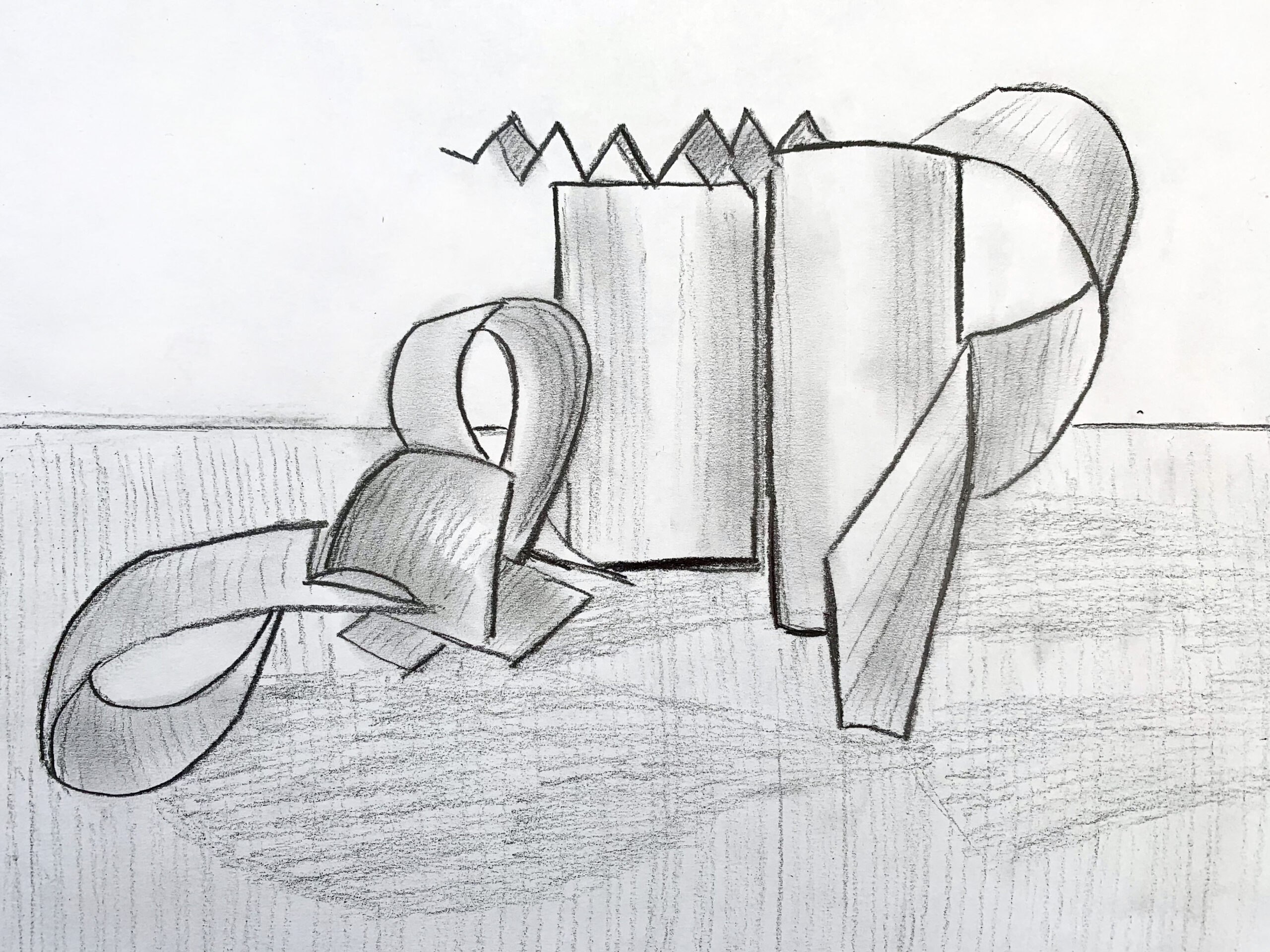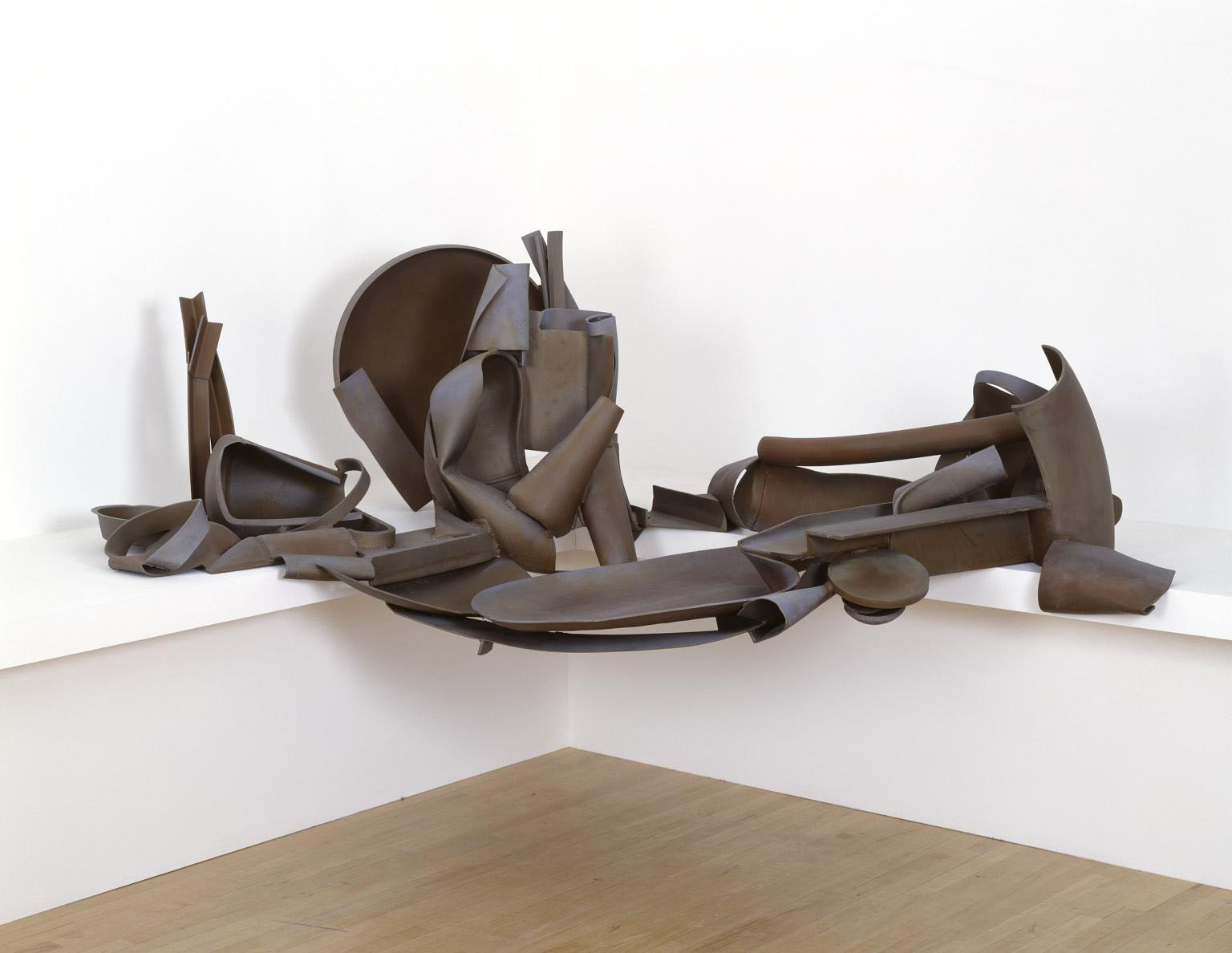Overview
Students will reflect on their art making using close-looking, speaking, writing, and/or sketchbook prompts.
Materials and Tools
- Pencil
- Sketchbook or one to two pieces of paper
- Sculpture from the previous lesson
Activities
Note: The following activities are written with sample language you may use with your students. Following the art-making lesson, you may choose as many reflection activities as desired for students to work on in class or independently.
Step 1: Close Looking: Anthony Caro (10-15 minutes)
Hello, artists! Today we are going to continue exploring free-standing sculpture. To begin, let’s look at an artwork by Anthony Caro.
Note to Teachers: Before teaching with a work of art, spend some time looking closely at it on your own. Familiarizing yourself with the artwork will prepare you to guide the close-looking activity.
If your students are new to looking at art together, you can introduce the activity to students in the following way:
Today we are going to spend some time looking at and discussing a work of art together. When we look at art, there are no right or wrong answers. I’m going to ask you to look closely, share your ideas about what you see, and listen respectfully to each other’s ideas. Everyone’s ideas are important. We all see things differently, and when we look at art, we can learn to see through each other’s eyes.

Look closely at this sculpture by Anthony Caro.
- How did this artist arrange the shapes? Where do you see that in the sculpture?
- Did the artist use any techniques that you tried? Which ones?
Step 2: Close Looking at Student Work (10 minutes)
Take a close look at your relief sculpture. Pick two shapes that you find interesting.
- How are they the same? How are they different?

Step 3: Writing Activity: (10 minutes)
Now we are going to write about our artwork. Look closely at your sculpture and think about how it felt to make it.
Based on your students’ writing skills, choose from the options below:
Option 1: Write a sentence to answer each question.
- What was your favorite part of making a sculpture?
- What was challenging about making the paper stand up or building with it? How did you solve the challenge?
Option 2: Use the sentence frames below to write two sentences about your artwork.
My favorite part of making a sculpture was ________.
It was challenging to make the paper stand up because _________.
It was challenging to build with the paper because __________. I solved the problem by __________.
Step 4: Sketchbook Activity (10-15 minutes)

Now, we’re going to look closely at our sculpture and notice what changes when we look at it from different points of view.
Look closely at your sculpture, noticing each shape and its placement. Draw your sculpture. Then turn your sculpture and draw it from a different point of view.
Make drawings from three different views—from the front, the side, the back, or from above.
Model looking at your sculpture from different points of view and noticing what you see. For example, you could say: I’m going to start by drawing the view from the front. What shapes do you see? Take suggestions from students. Now, let’s look at it from above. Now, what do you see?
Now it’s your turn. What points of view will you choose to make your drawing?
After students finish their drawings, ask:
- What point of view did you choose?
- How did you draw your sculpture?
Vocabulary
Point of view
Resources

More work by Anthony Caro: https://www.anthonycaro.org/

